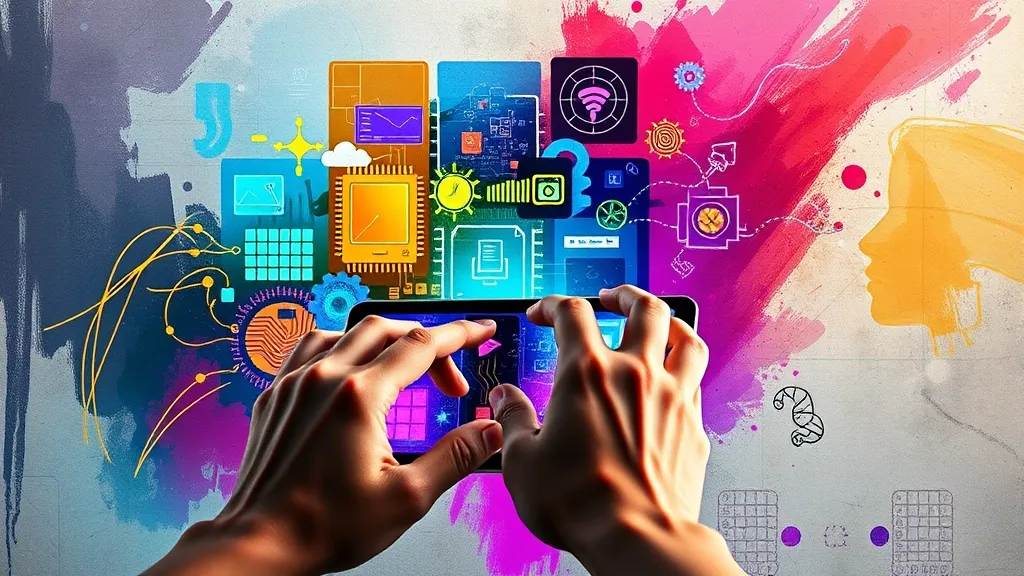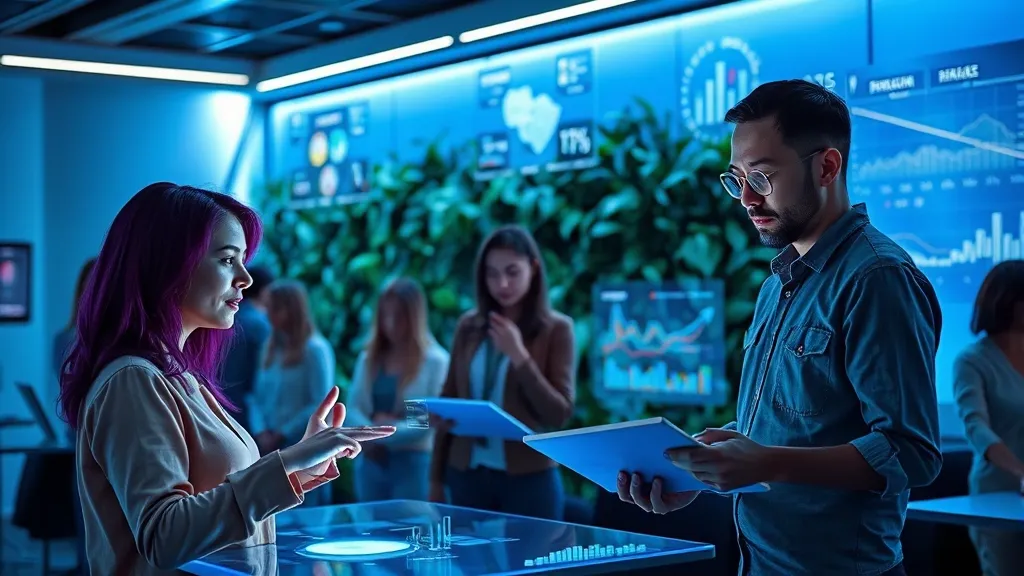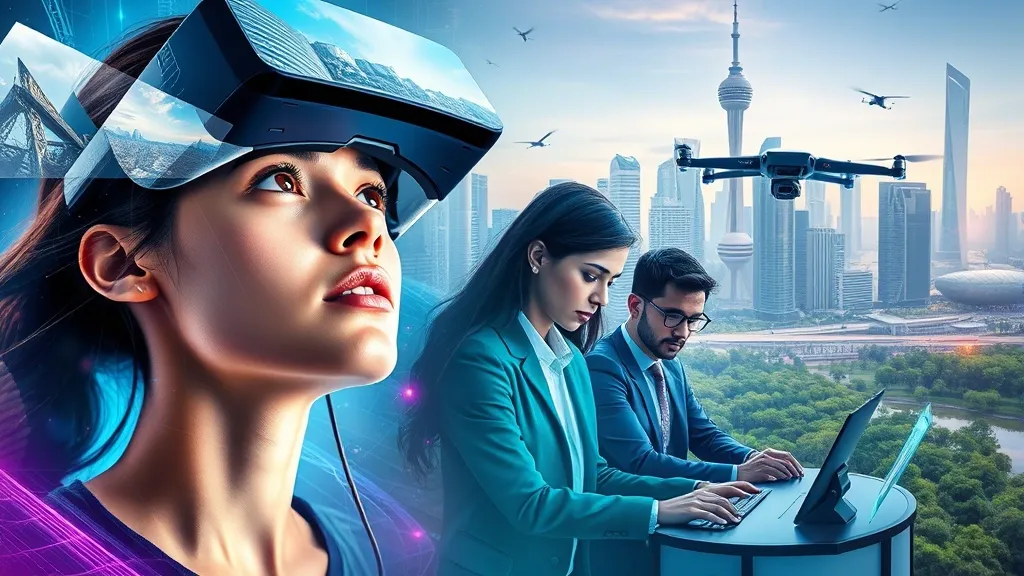Pixels with Purpose: The Evolution of GIFs in Digital Narratives
Ah, GIFs. Those delightful little loops of animation that can express more emotion than a thousand words. Seriously, who needs to type out a whole paragraph when a well-timed GIF can nail the vibe perfectly? It’s like the ultimate shortcut in the world of digital communication. But they’ve come a long way since their birth in the early 90s, and it’s fascinating to see how they’ve evolved into a storytelling tool.
Originally, GIFs were just simple images that could move a little—like a baby taking its first steps. Fast forward to today, and these pixels have grown up! They’re now a staple in social media, online conversations, and even marketing campaigns. I mean, just think about it: how often do you scroll through your feed and see a GIF that just makes you stop and chuckle? Or maybe it’s one that perfectly captures your mood? Yeah, they’ve got that power.
But it’s not just about the laughs. GIFs have found their way into serious narratives, too. Documentaries, educational content, and even advertisements are using these animated gems to convey complex ideas in a digestible format. It’s like giving your audience a quick snack of information instead of a full-course meal—they get the gist without feeling overwhelmed.
- Emotion: A well-placed GIF can evoke feelings faster than you can say “scroll.”
- Engagement: They keep viewers interested and can make boring content a little more fun.
- Memorability: People remember visuals better than text. And let’s face it, a cute cat GIF is way more memorable than a dry statistic.
What I find really cool is how different platforms have embraced GIFs in their own unique ways. Twitter’s got those snappy, in-the-moment reactions, while platforms like Slack make them a part of workplace culture—because who doesn’t love a good “facepalm” GIF to sum up a Monday morning meeting? It’s almost like we’re all speaking a secret language, where a GIF can bridge gaps that words sometimes can’t.
In the grand scheme of things, GIFs are more than just funny clips; they’re a form of storytelling that’s accessible to everyone. They can capture a moment or a feeling in a way that’s instant and relatable. So, the next time you send a GIF in a chat, just remember: you’re not just sharing a funny image, you’re weaving a tiny thread into the vast tapestry of digital narratives. And honestly, that’s a pretty awesome thing.
From Mundane to Mesmerizing: How GIFs Transform Storytelling
You ever scroll through social media and just get lost in those tiny, looping animations? Yeah, me too. GIFs have this magical way of taking something as boring as plain text and turning it into a mini spectacle. Seriously, who wants to read a long paragraph when you can just watch a cute cat do a backflip or a meme that perfectly captures your feels?
In the world of storytelling, GIFs are like that sprinkle of glitter on a cupcake. They add a little something special that can really grab attention. It’s not just about showing a movement; it’s about evoking an emotion in a split second. When you pair a well-timed GIF with your narrative, it can amplify the message and create a connection with your audience. You know, like when you send that perfect GIF to your friend to express what you’re feeling without saying a word. It’s like the universal language of the internet!
Think about it. A simple story about a bad day can be transformed into a relatable experience when you throw in a GIF of someone dramatically facepalming. It’s like saying, “Hey, I get it!” without having to write it all out. Plus, GIFs can help break up text-heavy content, which is a win-win if you ask me. Nobody wants to read a wall of text; throw in a few GIFs, and suddenly, it feels like a fun conversation instead of a lecture.
Now, I’m not saying we should replace all our words with GIFs. That could get messy real quick. Imagine trying to have a serious discussion and communicating everything through GIFs alone. “So, how do we handle this project?” *insert GIF of a dog looking confused*. But in the right context, GIFs can be the cherry on top that makes your storytelling pop.
- They capture attention instantly.
- They convey emotions effectively.
- They break down complex ideas into digestible chunks.
In a world where attention spans are shorter than a cat video, GIFs are a tool that’s hard to ignore. They remind us that storytelling doesn’t have to be all serious and stuffy; it can be playful and engaging. So, next time you’re crafting a story, consider adding a GIF or two. It could take your narrative from dull to dazzling in a heartbeat!
The Artistry of Movement: Crafting Emotion and Engagement Through GIFs
You ever scroll through your feed and stumble upon a GIF that just hits you right in the feels? Like, suddenly, that tiny loop of animated joy or despair speaks to you more than a thousand words ever could. That’s the magic of GIFs, folks. They’re not just cute little animations; they’re tiny masterpieces that can convey powerful emotions in the blink of an eye—or, you know, the loop of a few seconds.
GIFs can capture a moment in time and turn it into something relatable. Think about it: you can express excitement, frustration, or even just a good ol’ LOL with a simple click. One second you’re scrolling mindlessly, and the next, you’re laughing out loud or cringing at something that totally resonates with your mood. It’s like a universal language, right? You don’t need to speak the same tongue to understand the joy of a cute puppy or the disappointment of a failed attempt at baking.
But let’s get real for a sec—GIFs aren’t just for memes and cat videos (though, let’s be honest, they’re a major part of the GIF culture). They’re tools for storytelling, too! You can craft a narrative arc with just a few frames. It’s like creating a mini-movie where every frame counts. You’ve got to think about timing, repetition, and the emotional punch you wanna deliver. And, trust me, nailing that timing can be a real art form.
- Emotion: GIFs can evoke feelings in a way that static images just can’t.
- Engagement: They grab attention and keep people watching—no one can resist a good loop!
- Storytelling: A well-placed GIF can enhance your message and make your audience feel more connected.
So, next time you’re thinking about how to spice up your content, consider a GIF. It’s like adding a dash of spice to a dish; it can elevate everything. Just remember, not all GIFs are created equal. Choose wisely, and you just might create a moment that sparks emotion and keeps your audience engaged. Who knew a simple loop could have such an impact? It’s kinda wild when you think about it!
Beyond the Loop: The Future of Visual Storytelling in the Age of Technology
You know, it’s kinda wild to think about how far we’ve come with visual storytelling. I mean, we went from cave paintings to TikTok in, like, no time at all! And honestly, as someone who’s always trying to keep up with the latest trends, it’s both exciting and a bit overwhelming. But hey, that’s technology for ya—always evolving, always pushing boundaries.
So, what does the future hold for us? Well, for starters, the rise of augmented reality (AR) and virtual reality (VR) is gonna take storytelling to a whole new level. Imagine slipping on some VR goggles and being transported right into the middle of a story, feeling like you’re part of the action. I can already picture it: me, sipping coffee, hanging out with dinosaurs in Jurassic Park. Okay, maybe that’s a stretch, but you get the idea!
Then there’s artificial intelligence. It’s not just about chatbots and algorithms anymore; AI is stepping into the creative ring, too. We’re seeing tools that can generate visuals and even help storytellers craft narratives. It’s kinda cool, but also a bit spooky, right? Like, are we gonna end up with robots writing the next great American novel? I mean, who needs sleep when you’ve got a machine that can write 24/7?
- Enhanced Interactivity: Expect more interactive content that pulls the audience in and makes them part of the story.
- Personalization: With AI, stories can be tailored to individual preferences, making each experience unique.
- Collaboration: Tech is making it easier for creators from all over the world to work together, blending styles and ideas.
But let’s not forget the importance of human touch in storytelling. No matter how advanced technology gets, there’s something about the human experience that resonates. It’s those raw emotions, the messy bits of life, that really connect with people. And sure, a robot can churn out a story, but can it feel the same way we do? I doubt it!
In the end, the future of visual storytelling is gonna be a mashup of tech and humanity. It’s about finding that balance—using technology to enhance creativity while keeping the heart of storytelling alive. So, let’s embrace the weirdness of it all and see where this wild ride takes us!


